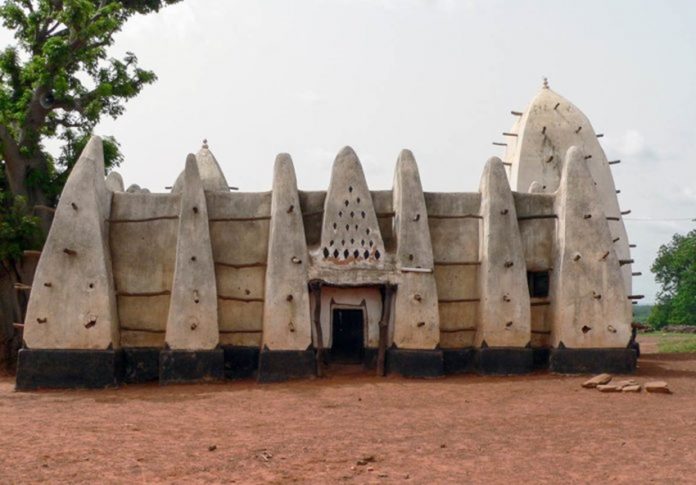
The Northern region is among the sixteen regions of Ghana with lots of tourism potentials that could be harnessed to create job opportunities.
The regions have lots of tourism potentials that could be harnessed to create job opportunities to alleviate poverty and the current “Year of Return” a major landmark marketing campaign targeting the African, American and Diaspora Market to mark 400 years of the first enslaved African arriving in Jamestown Virginia.
The aim of the campaign is to promote Ghana as a tourist destination and investment opportunity and also an effort to “unite Africans on the continent with their brothers and sisters in the Diaspora”.
Despite the campaign and the arrival of the tourists, the rest has since received share of the tourists with the majority taken to Accra or cape coast where the transit took place instead of the toot of the slaves.
I have come to see the regions as people of accommodating and lovely with rich historical, natural and cultural attractions. The hospitable nature of the people with tropical climate could attract one to invest in the area.
Tamale is a relatively new town which at the turn of the last century was just a cluster of villages known mainly for the numerous Shea butter trees- the ‘tama’ from which it got the name Tamale. In 1907 it became the capital of the Northern Province of the British colony of the Gold Coast of which the north played a very important role in the 2nd world war.
In spite of its status as the fastest growing city in West Africa and the fourth-largest regional capital, Tamale is unique in the coexistence of centuries’ old traditional culture and modernity, typified by the modern office blocks standing side by side with old round huts with conical thatch along the major roads.
Other cultural features to be observed in Tamale are the numerous shrines spread in all major traditional quarters such as Choggu, Nyohini and Vittin.
The combination of the variety of eco- tourism assets, relics of the slave trade against the background of diverse and very different culture is providing the draw for the increasing number of the energetic and courageous finding their way to Tamale.
Two of the vestiges of the period are the old barracks and the Tamale International airport, which were built for military purposes. In addition to these is the monument to the royal wedding between King George V and Queen Elizabeth I located in the Gardens opposite the Jubilee Park.
For the cultural tourist, Jakarayili and Kukuo, suburbs of Tamale are the centres for traditional weaving and pottery and other community life style encounters.
Traditional Architecture of the North is noted for leather ware and the place to see the complete chain of activities involved from tanning raw cowhide to finished sandals, bags, belts or boots at Zongoni along the Buipela road while the artisanal blacksmiths who make simple tools, musical instruments and bangles can be found at Sabongida.
Shea butter is the raw material for body creams. Production of this important cream from the shea fruit is undertaken in villages around Tamale and all districts. All these traditional crafts and products can be bought in all the markets around the town but the best places to see these crafts are the Centre for National Culture and Aboabo Market.
Talking of the Gbewaa Palace and the Bamaya dance with lots of festivals such as fire festival, Damba contributes to the uniqueness of the attractions in the region to be attracting tourists who stream to the capital, Tamale in numbers.
The current Damba festival was held at Yendi which is the Kingdom of Dagbon after several decades of chieftaincy disputes.
History depicts that the Komas were probably the earliest known inhabitants of the area now known as the Northern Region. Even though the Komas have disappeared as a distinct tribe, they have left behind a treasure trove from their period.
The Dagombas call their kingdom Dagbon. The overlord or king of Dagbon called Yaa Naa and the seat of his Paramouncy is Yendi. They trace their ancestry to Zamfara in present day Nigeria from where their common ancestor, Tohazie or the ‘Red Hunter’ traveled to Biung.
Gbewa, Tohazie’s grandson settled in Pusiga in Upper East Region from where his sons Sitobu, Tohagu and Mantambu migrated southwards and founded Dagbon, Mamprusi and Nanumba kingdoms respectively.
Access to the Northern Region is provided on the major highway routes to Tamale from the south and north. One can get to Tamale from the south using the Accra- Kumasi- Kintampo road or the Accra- Hohoe-Jasikan to Bimbilla road (Eastern corridor).
The completion of the Eastern Corridor road network could help ease stress of commuters, drivers and investors because that is the shorted road to North and South.
According to some indigenes the campaign for the year of return is in the right direction aimed at encouraging foreigners to trace their routes but expressed worry about the low patronage in the region despite its contribution to the event.
They said the North is where the slaves were taken from with castles at the coast serving as the points of departure for their ancestors and that the Northern Region is the most likely place to trace their ancestors.
“Nowhere in the country can you find more ancient slave markets and relics than in the Northern Region. The cultural features of the people in the North are as unique as they are diverse and so different from any other in and around the country” they said.
What makes the region unique also is the Tamale international airport that most government has tried their best to make it one of the best in west Africa.
With the gradual expansion of the airport, it has seen the airlifting of pilgrims to Mecca while most business persons also use as an easy access to their destinations for business activities.
B&FT






















